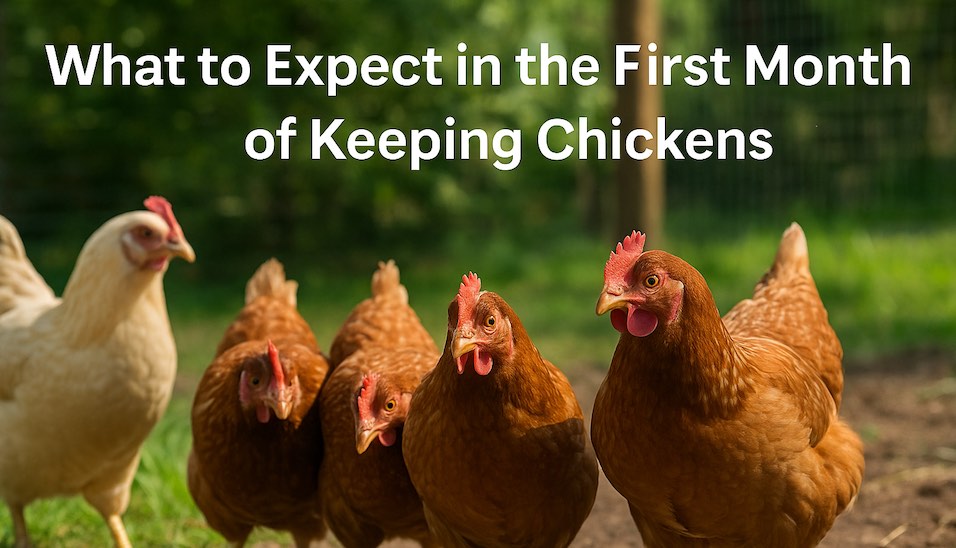When Can Chicks Be Moved Outside?
When Can Chicks Be Moved Outside?
If you're raising baby chicks for the first time, you're probably wondering when it's safe to move them outside.
Chicks should be fully feathered, typically around 5-6 weeks old, before transitioning outdoors. They need a heat plate for the first few weeks, and outdoor temperatures should consistently be above 15.5°C before they can go outside without supplemental heat.
Gradual acclimation and a safe, predator-proof coop are essential for a smooth transition. The Dine-A-Chook Premium Australian Made Chick Brooder is recommended for the early stages of chick rearing.
When Can Chicks Go Outside Permanently?
Baby chicks can move outdoors when they’re fully feathered, which usually happens at around 5–6 weeks of age. Feathers allow chicks to regulate their body temperature without relying on external heat, a critical step for survival outside.
For chicks to stay outside permanently, the weather should also cooperate. In most parts of Australia, night-time temperatures need to be above 15.5°C. Anything lower, and your chicks might struggle to stay warm—especially if they’re still growing their final feathers.
How Long Do Chicks Need a Heat Plate?
Newly hatched chicks need a consistent temperature of 32-35°C during their first week to stay healthy and thrive.
Chicks can go outside without a heat lamp once they are fully feathered and the outdoor temperatures are consistently above 15.5°C, even at night.
If the temperatures drop below this threshold, it might be necessary to provide supplemental heat in the coop.
To gradually prepare chicks for outdoor living, reduce the temperature by 3°C each week. By the time they are fully feathered, typically around 5-6 weeks, they’ll no longer need the heat plate.
However, the exact timing can vary. If the ambient temperature is cooler or the chicks belong to a slower-feathering breed, they might need the heat plate for an extra week or two. Always observe your chicks’ behavior—if they huddle together near the heat source, they’re likely still too cold.
Checklist for Moving Chicks Outside
Before moving your chicks outside permanently, ensure the following conditions are met:
- Fully Feathered: Chicks should have all their feathers.
- Age: Chicks should be at least 5-6 weeks old.
- Stable Temperatures: Outdoor temperatures should be consistently above 15.5°C (60°F).
- Safe Coop: Ensure the coop is predator-proof and has proper ventilation.
- Gradual Introduction: Start with short outdoor visits and gradually increase the time spent outside.
When Can Chicks Go in the Coop?
Chicks can be moved to the coop once they are fully feathered and the coop is prepared to keep them safe and warm. It's a good idea to keep them in the coop for a few days before allowing them access to the run. This helps them acclimate to their new home and understand where to return at night.
Putting Chickens Outside for the First Time
When putting chickens outside for the first time, choose a warm, sunny day. Start with short periods and gradually increase the time they spend outside. Always supervise their initial outings to ensure they are safe and comfortable.
How Long Do Chicks Stay in the Brooder?
Chicks typically stay in the brooder for 5-6 weeks, depending on their feathering and the ambient temperature. During this time, they need a heat source and a safe, clean environment to grow and develop.
Tips for a Smooth Transition
- Use Familiar Objects: Move familiar objects like feeders and waterers to the coop to make the transition easier.
- Gradual Temperature Change: Gradually expose chicks to outdoor temperatures to help them acclimate.
- Monitor Closely: Check on your chicks frequently during the first few days and nights in the coop.
- Block Nesting Boxes: Prevent chicks from sleeping in nesting boxes to avoid soiling them.
Recommended Brooder
For the initial weeks, a high-quality brooder is essential. The Dine-A-Chook Premium Australian Made Chick Brooder is an excellent choice.
It provides a safe, warm environment that mimics the natural heat of a mother hen, ensuring your chicks stay healthy and comfortable.
Raising Healthy, Happy Chooks Starts Here
Knowing when can chicks be moved outside is key to their health and development. Fully feathered chicks, warm temperatures, and a safe coop make for a smooth transition. Equip yourself with the right tools, such as a Dine-A-Chook Brooder and Heat Plate, to give your chicks the best start.
Ready to create a happy home for your chicks? Contact us for expert advice and quality supplies today!




